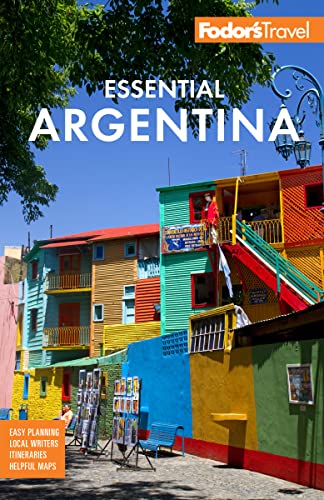If You Like
Wild, Gorgeous Nature
Argentina’s climates range from tropical to subantarctic, and altitudes descend from 22,000 feet to below sea level, so natural environments here vary hugely. Plants, birds, and animals thrive undisturbed in their habitats. Along the south Atlantic coast, sea mammals mate and give birth on empty beaches and in protected bays. To the north, guanaco, rhea, and native deer travel miles over Andean trails and across windswept plains, while birds pass above in clouds of thousands or descend on lagoons like blankets of feathers.
Glaciar Perito Moreno, Patagonia. Tons of ice regularly peel off the 60-meter-tall (197-foot-tall), 4-km-long (2½-mile-long) front of this advancing glacier and crash into Lago Argentino.
Cataratas de Iguazú, Northeast. Iguazú Falls National Park protects 275 waterfalls and countless species of animals. Trails disappear into a greenhouse of creepers, epiphytes, orchids, and bromeliads.
Península Valdés, Patagonia. Small boats bring you alongside southern right whales as they feed, mate, give birth, and nurse their offspring.
Parque Nacional Nahuel Huapi, Bariloche. Rich forest surrounds the sapphire-blue waters of Lago Nahuel Huapi. Smaller bodies of water nearby make this Argentina's lake district.
Quebrada de Humahuaca. Vibrant pinks, yellows, and greens color the walls of this northwestern canyon like giant swaths of paint.
Reserva Faunística Punta Tombo, Patagonia. This Atlantic peninsula is home to the world's largest colony of Magellanic penguins.
Adrenaline Rushes
If an eyeful of natural beauty doesn't make your heart race in the way you'd like, why not try an adventure sport? Argentina is great for winter rushes—skiing, snowboarding, and dogsledding among them. When temperatures soar, you can cool down by white-water rafting or leaping (with a parachute) into the breeze.
Ice Trekking on the Glaciar Perito Moreno. You can trek over the glacier's 1,000-year-old ice, then celebrate your ascent with cocktails served over cubes of it.
White-water rafting in the Río Mendoza. This river's medium-to-difficult rapids course through Andean foothills. You can combine one- or two-day descents with horseback riding in the mountains.
Skiing and snowboarding at Las Leñas, Catedral, and Chapelco ski areas. Las Leñas near Mendoza, Catedral near Bariloche, and Chapelco near San Martín de los Andes offer groomed runs, open bowls, and trails that follow the fall line to cozy inns or luxurious hotels.
Tierra Mayor, Patagonia. This family-run Nordic center near Ushuaia has such novelties as dogsled rides, snowcat trips, and wind skiing.
Mountain climbing at Aconcagua, Mendoza Province. Close to the Chilean border, this 6,959-meter (22,831-foot) peak is the highest in the Western and Southern hemispheres and is surrounded by a host of other climbable mountains.
Culture and History
Buenos Aires is a city of European-inspired boulevards and historic neighborhoods. Beyond the urban sprawl, gauchos work ranches that reach the horizons. The Andes tower above the age-old vineyards of Mendoza and San Juan, while Salta and Jujuy retain traditions that stretch back to before the arrival of Europeans. Some of the world’s largest dinosaurs once roamed the windswept reaches of Patagonia.
Museo de Arte Latinoamericana de Buenos Aires (MALBA). One of the world's few museums specializing in Latin American art is in a stunningly simple building.
Festival de Tango, Buenos Aires. The world's most important tango festival is a two-week extravaganza culminating in a huge milonga along Avenida Corrientes.
Festival de la Vendimia, Mendoza. At the grape-harvest festival, during the first week of March, parades, folk dancing, and fireworks take place. The crowning of a queen marks the grand finale.
Museo de Arqueología de la Alta Montaña, Salta. The rich pre-Columbian heritage of Argentina's Northwest is explored here.
Carnaval. Brazilian-style feathers and sequins characterize February parades in Entre Ríos and Corrientes provinces, but pre-Columbian rituals mark celebrations in Salta and Jujuy provinces. In Buenos Aires, neighborhood troupes take to the streets to sing and dance murga.
Museo Paleontológico, Trelew. You can marvel at dinosaur bones and watch archaeologists at work at this impressive paleontology museum.
Shopping
On weekends town squares become ferias (open-air markets); street performers wind their way between stalls of handmade offerings. Big shopping malls stock local and international brands. Wine, chocolate, cookies, and preserves are some of the consumables for sale.
Handmade jewelry and housewares, Buenos Aires. Artisans sell wares for you and your home in alpaca, wood, and leather.
Silver and leather, San Antonio de Areco. Modern-day gauchos can stock up on saddles, bridles, asado knives, belts, and even handbags and jewelry in this town of leatherworkers and silversmiths.
Ceramics and weavings, Salta and Jujuy. Salta is famed for its rich red and black ponchos. Woven wall hangings and alpaca knitwear are ubiquitous in Jujuy. Red-clay figures and cookware abound.
Wine, Mendoza and Salta. Tour the vineyards, sampling malbec, cabernet, and torrontés at leisure, before stocking up on those you liked most.
Cutting-edge designer clothing, Buenos Aires. In trendy Palermo Viejo and San Telmo, cobbled streets are lined with the boutiques of up-and-coming designers.
Chocolate and beer, Bariloche. Many of Bariloche's founders were German, hence the thriving trade in craft beer and chocolate in flaky sticks (en rama) or bars filled with locally grown berries.




